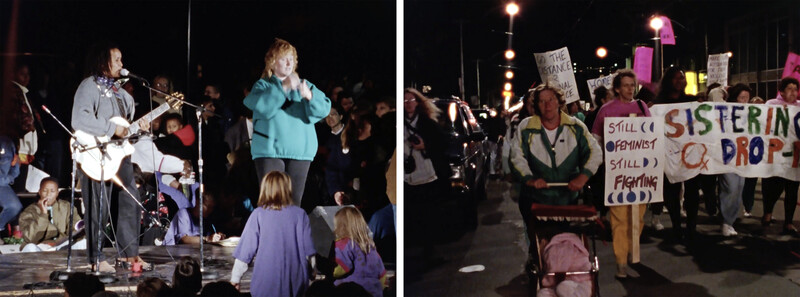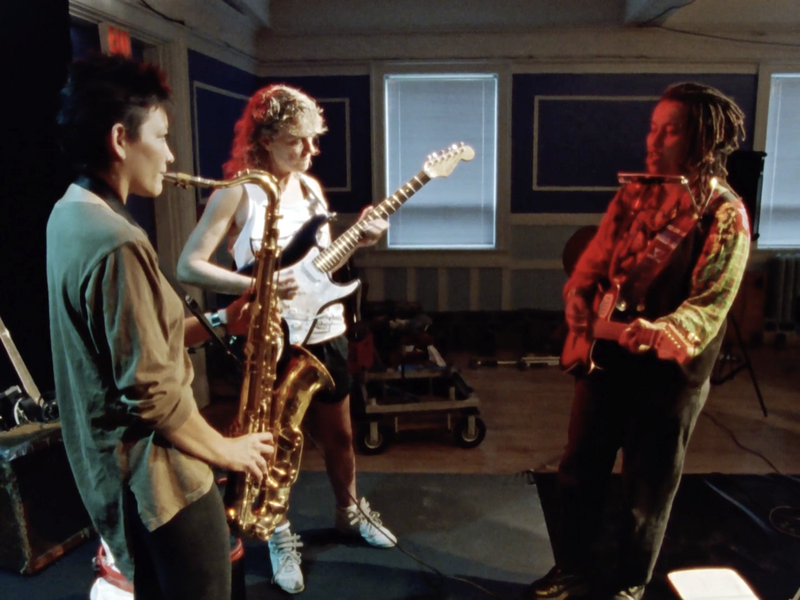- 10.0Cover
- 10.1Ghost PopulationsInes Doujak
- 10.2How to Read this Broadsheet
- 10.3BluntRinaldo Walcott
- 10.4COVID-19, Language, and IdentityAi Taniguchi
- 10.5Finding LanguageVanessa Dion Fletcher
- 10.6The Abundance and Conflict of On-Demand WritingLouise Hickman
- 10.7UnlanguagingJesse Chun
- 10.8An Infinity of TracesMatt Nish-Lapidus
- 10.9Speaking Out: Researchers on Pandemic-Era HealthcareZoë Dodd, LLana James, Laura Rosella
- 10.10Living ScoresOana Avasilichioaei
- 10.11Pronouncing (Un)FreedomShama Rangwala
- 10.12blertJordan Scott
- 10.13In Protest and Choir SongMaandeeq Mohamed
- 10.14In Support of the CensureJacob Wren
- 10.15Glossary
In Protest and Choir Song
- Maandeeq Mohamed
Faith Nolan and the CUPE Freedom Singers, Hang on CUPE, 02:47
Hang on CUPE
Hang on CUPE
Hang on CUPE
Hang on11CUPE Freedom Singers, “Hang on CUPE,” written by Faith Nolan, 2009, https://soundcloud.com/faith-nolan/hang-on-cupe. Freedom Singers include: Sharon Allison, Daphne Ampofo, Jeannette Anderson, Verna Boothe, Evadne Chanderbhan, Marie Farray, Yvette Gomes, Joan Humphrey, Sharon Johnson, Charmaine Kelegan, Mazel Leslie, Sonia Moodie, Turmena Mornon, Susan Nembhard, Kelly O’Sullivan, Sharon Rollock, Irene Ryner, Yvonne Stewart, Dianne Williams, Pamela Dogra.
These are words sung by a chorus of personal support workers, many of them of Caribbean descent, who make up the CUPE Freedom Singers. Directed by Faith Nolan, throughout the early 2010s the Freedom Singers’ many voices coalesced into one chorus, repeating demands for more livable worlds:
We need money to buy food and pay the rent
We need money ‘cos the bills never end
We need raises ‘cos the prices soar
One voice alone cannot get us any more22Ibid.

The demands of any one labourer are amplified in the choral register, as “one voice alone cannot get us any more.” Choirs like the CUPE Freedom Singers insist on a future not premised on the exploitation of Black women’s labour. These demands conspicuously advocate justice for all workers—running counter to the privileging of “skilled labourers” in the indiscrete language of the state. At the same time, singing together, the choir insists on something else other than the exploitation of Black women’s labour: a more bearable life amidst deep unfreedom.
The utterances of this chorus, then, could also connect to the chants and cries of protesters from Malton People’s Movement. On April 10, 2021, Malton People’s Movement gathered near the Mississauga building where Ejaz Choudry was fatally shot a year earlier by Peel Regional Police, to protest the SIU’s clearing of the officer who killed Ejaz.
No justice, no peace
Defund the police
Abolish the police33CityNews, “Protest leads to several arrests in Malton Saturday,” April 10, 2021, video, 1:32, https://youtube.com/watch?v=chhXHdbKxNc.
This is a familiar refrain from uprisings across the Americas in the past year. Youth of colour shouted together at the intersection of Morning Star and Goreway. Their vocalized demands to abolish the police in 2021 recall the CUPE Freedom Singers' own chorus of demands made almost ten years earlier. Both offer different iterations on a familiar riff: a song to challenge the exploitation of racialized and gendered labour under capitalism; and a generation later, a chant to confront the routine police violence that maintains racial capitalism via the uneven distribution of life and death. I want to think of the chants of the Malton People’s Movement alongside what Stephen Best and Saidiya Hartman call "Black noise": "the kinds of political aspirations that are inaudible and illegible within the prevailing formulas of political rationality; these yearnings are illegible because they are so wildly utopian and derelict to capitalism.”44Stephen Best and Saidiya Hartman, “Fugitive Justice,” Representations 92, no. 1 (Fall 2005): 1-15.Sung and chanted in unison, these aural formations play with language, repeating phrases such as “No justice, no peace” and “Hang on” until they mean something new, coalescing as imposed demands on the state. Commerce is disrupted, streets are blocked, and strikes are invoked, as the demand for more livable conditions sounds. Here, I am reminded of Audre Lorde, who writes on “the transformation of silence into language and action.”55Audre Lorde, “The Transformation of Silence into Language and Action,” in Sister Outsider (Berkeley: Crossing Press, 2007), 40.Formations such as CUPE Freedom Singers and Malton People’s Movement make use of the aural collective to place the settler colonial state under pressure, sounding freedom dreams.66Robin D.G. Kelley, Freedom Dreams: The Black Radical Imagination (Boston: Beacon Press, 2002).

Also breaking with the grammar of anti-Blackness is the Latinx, Afro-Latin-America, Abya Yala Education Network (LAEN), who, along with other grassroots organizations such as Education Not Incarceration, successfully pushed for the removal of police from schools in the Peel District School Board (PDSB) in 2020. The presence of police in Peel public schools suggests that there is something at stake in the classroom—a site of language acquisition and discipline for many young Black students. According to Ena Chadha, Suzanne Herbert, and Shawn Richard’s 2020 review of the PDSB, the presence of police in Peel schools lead to the “arrests and stigmatization of Black children at a very young age” with “Black children...leaving the PDSB because it is not safe for them.”77Ena Chadha, Suzanne Herbert, and Shawn Richard, “Review of the Peel District School Board” (Ontario Ministry of Education, 2020), 8. In this site of language acquisition, what does it mean to change the conditions under which language is acquired and the settler state’s grammars of order and discipline are reproduced? Directly challenging such carceral models of teaching, LAEN’s political education campaigns critique the school-to-prison pipeline, and the related surveillance apparatuses that make Black, Indigenous, and Latinx children known to the police at ages as young as six (as was the case of a Peel officer who handcuffed a six-year-old girl in 2016).
Formed in June 2012, LAEN has conducted teach-ins and conferences, as well as engaged in extensive lobbying and advocacy efforts through various school board committees on the topic of banning police from schools. For instance, when a supposedly independent review of the PDSB’s School Resource Officer program concluded that the presence of police made “administrators, teachers, and students feel safer when they are at school,”88Linda Duxbury and Craig Bennell, “Assigning Value to Peel Regional Police’s School Resource Officer Profram” (Carleton University, Ottawa, 2018), 243. LAEN revealed that the review was actually conducted in partnership with the Peel police. LAEN also launched an extensive campaign to debunk the report’s biases. In 2018, LAEN hosted an information session to challenge the report’s statement that uniformed officers were perceived as safe by a majority of Peel students, highlighting how the conclusion did not centre the Black students who were most impacted by the School Resource Officer program. As LAEN’s challenge to the report states, School Resource Officers “among many other issues, create a school-to-prison pipeline and negatively impact our undocumented, Black, Indigenous, and racialized students due to racist racial profiling.”99LAEN Latin Afro-Latin-America, Abya Yala Education Network, “PLEASE READ AND SHARE WIDELY! The review of the Peel Regional Police's School Resources Officer (SRO) program conducted…” Facebook, January 10, 2018, https://facebook.com/LAENToronto/posts/please-read-and-share-widelythe-review-of-the-peel-regional-polices-school-resou/1414948575282757.Such challenges reject the findings of reports where Black students’ concerns are illegible to a numerical majority who feel safe in the presence of police. Taking seriously the experiences of Black students means refusing the grammar of such reports, and imagining anew the sites where language and knowledges are reproduced. It is to ask: what would it look like if the nine-million dollars spent on the School Resource Officer program was reallocated into community-focused education instead of carceral systems?
By 2020, the PDSB would officially end the School Resource Officer program. In the same year, X University cancelled plans to implement a special constable program on campus, after pushback from the Black Liberation Collective and campaigns such as No Cops on Campus. As these recent activist-led victories attest, the removal of police from schools articulates at once a simple demand and a bold call for freedom—like visionary dreams nested in the protest chant and choir song.
See Connections ⤴